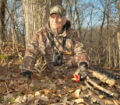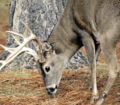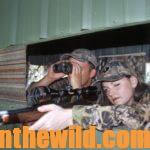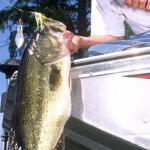Editor’s Note: Michael Braden (http://michaelbradenarchery.com/) of Houston, Texas, has won both ASA 3-D tournaments and IBO tournaments. He’s won numerous national championship titles and several Male Shooter-of-the-Year titles and is an avid bowhunter. He bought his first bow at a pawn shop in 1989, shot his first archery tournament in 1991 and became a professional staffer with PSE (http://pse-archery.com/) in 1996. As well as being a tournament archery shooter, Braden’s an archery coach.
 Phillips: Michael, most bowhunters will be shooting from tree stands or ground blinds. Since the shooter won’t be standing at the line like he will be at an archery tournament, how can an archery coach teach form and shooting style? More than likely, the shooter won’t be able to place his feet correctly like he will if he’s standing at the line shooting an archery tournament. Too, he probably won’t have the proper posture like he will in an archery tournament. How do you coach a hunter to have proper form when he’s sitting in a chair in a ground blind or possibly in a tree stand and has to bend-over to shoot under a limb?
Phillips: Michael, most bowhunters will be shooting from tree stands or ground blinds. Since the shooter won’t be standing at the line like he will be at an archery tournament, how can an archery coach teach form and shooting style? More than likely, the shooter won’t be able to place his feet correctly like he will if he’s standing at the line shooting an archery tournament. Too, he probably won’t have the proper posture like he will in an archery tournament. How do you coach a hunter to have proper form when he’s sitting in a chair in a ground blind or possibly in a tree stand and has to bend-over to shoot under a limb?
Braden: First, I’ll coach the shooter to maintain the best form he or she possibly can, whether he’s in a tree or sitting in a chair in a ground blind. I also coach my shooters to practice sitting in a chair and shooting from a ground blind. Sitting in chair not only changes your form, but it also changes your stability. When I coach bowhunters, I have them practice shooting from their chairs and tree stands. I try to simulate all the different ways a hunter may have to contort his body to get-off a shot. I coach my students to shoot as far as they can to the left and the right in practice, because I know a bowhunter doesn’t know exactly where a deer will appear. The bowhunter needs to find out how he can move his body to get-off an effective shot. He also needs to practice from a tree and shooting uphill and downhill from a ground blind. One of the tactics I recommend to my students is to practice every-possible shot they think they may be called upon to make well before deer season. Don’t just stand in the backyard, and shoot the same target at the same distance on level ground every day.
Phillips: The form a bowhunter uses is often completely opposite of the form a tournament archer uses. If you’re trying to get a hunter ready for bow season, and you put him in a tree stand and turn him sharp to the left or the right or have him half standing to simulate shooting under a limb, how do you correct his form to enable him to shoot properly from a sitting position?
 Braden: The bowhunter’s form isn’t completely different from the tournament-archer’s form. I agree that rarely does a tournament archer have to shoot from a seated position in competition. However, it’s very likely that the bowhunter will have to shoot from a seated position. In coaching a bowhunter, I’ll take him to the extreme limits of his ability to execute an effective shot. I want that hunter to know what angle or body position is too extreme for him to shoot effectively. Once we know that, then we can determine where a deer or any other animal has to be for the hunter to take or not take the shot. A bowhunter sitting in a tree needs to know when a deer’s at such an extreme angle that he’ll have to contort his body into an extreme position to make an effective shot. In bowhunting, understanding when not to shoot is just as important as knowing when to shoot.
Braden: The bowhunter’s form isn’t completely different from the tournament-archer’s form. I agree that rarely does a tournament archer have to shoot from a seated position in competition. However, it’s very likely that the bowhunter will have to shoot from a seated position. In coaching a bowhunter, I’ll take him to the extreme limits of his ability to execute an effective shot. I want that hunter to know what angle or body position is too extreme for him to shoot effectively. Once we know that, then we can determine where a deer or any other animal has to be for the hunter to take or not take the shot. A bowhunter sitting in a tree needs to know when a deer’s at such an extreme angle that he’ll have to contort his body into an extreme position to make an effective shot. In bowhunting, understanding when not to shoot is just as important as knowing when to shoot.
Knowing the extreme angles from which you can shoot plays an important role when considering stand placement. When I’m coaching, I have the bowhunter sit in a chair like he plans to hunt. In other words, if you’re sitting in a ground blind or a tree stand, where will the target be? Most bowhunters sit in their chairs facing the targets. But that’s really the worst position. You can’t shoot effectively straight-out in front of you. If you’re right handed, you’ll want the chair turned slightly to your left. I teach bowhunters that they need to set-up their tree stands, so that they’re sitting in the best-possible positions to get maximum form when animals come-in to them. So, many times we can solve shooting-form problems by how we set-up our tree stands, according to where the deer will come from, and where we want to take the shot.
 Phillips: If you’re hunting a trail and looking straight-down the trail, where do you want to set-up your tree stand?
Phillips: If you’re hunting a trail and looking straight-down the trail, where do you want to set-up your tree stand?
Braden: I’ll set-up my tree stand, so that the deer will come to the left-hand side of the tree stand, because I’m a right-handed archer. I want that deer to be 90-degrees from me, when I’m in my tree stand. I should be able to put-out my left arm straight-out to my side, and that’s the direction from which the deer should come. Then when the deer approaches, I can draw the bow and shoot to my left, while I’m seated. One of the biggest problems bowhunters have with form isn’t the proper alignment of their bodies before their shots, but rather putting their tree stands in the wrong places. Then they’ll have to use poor form if an animal comes-in to them. Many times the bowhunter wants to set-up his stand to see the animal coming-in comfortably, rather than setting-up his stand to take the shot comfortably.
To learn much more about bowhunting, get John E. Phillips’ eBooks, print books and audiobooks by going to https://johninthewild.com/books. For free information on making jerky from your deer to provide a protein-rich snack, you can download a free book from https://johninthewild.com/free-books.










